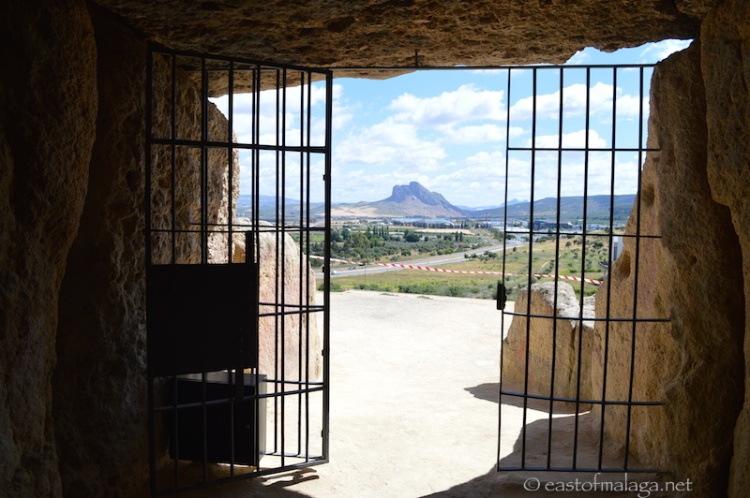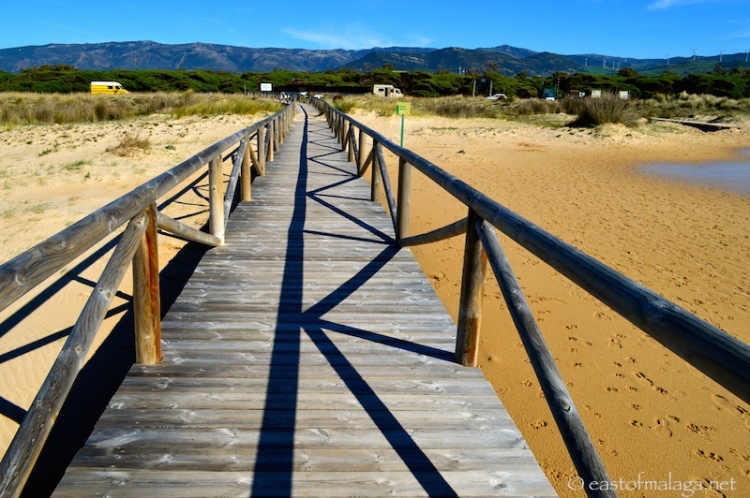My trip this month, is just the kind that I began this challenge for – to go somewhere I’ve been meaning to go, but have never got around to it!
The white, mountain village of Canillas de Aceituno lies, like several others, in the shadow of the largest mountain in the Axarquía region – La Maroma, a bare, pointless peak reaching to a height of 2065 metres.
I chose to take the back road to Canillas de Aceituno from Cómpeta, driving past Archez, Salares and Sedella along the way. It’s a beautiful drive, with a natural landscape of hills, mountains and ravines and it was worth stopping a few times to take photographs of the open vistas towards a shimmering La Viñuela reservoir in the distance, or the towering Monte Maroma, nearby. A quicker route would be up the A356 from Vélez-Málaga and then turn right towards the village, but I had the time to linger.
On the approach to Canillas de Aceituno, I came across La Rahige, which is a wooded area with a ravine, pools and waterfalls. As it was late July, the water was only a trickle, but I’m sure it rages through here during the winter months.
As I explored the shady ravine, I looked up and caught a glimpse of a mountain goat – the first I have ever seen. He seemed to be watching my every move as he expertly perched on the edge of the cliff face.
Records show that there has been a settlement on the site of Canillas de Aceituno since the Moorish occupation in the 8th century, when the main industry was the growing of mulberry trees for silk production. Indeed, there are still two Arabic arches preserved within the village, the first on Calle Agua (which is the prettier of the arches, pictured above) and another on the narrow Calle Calleja, a little higher in the village. These arches once formed part of a wall that surrounded the settlement, and in which gates were closed at night for protection.
After parking the car, I headed towards the Town Hall in Plaza de la Constitución at the centre of the village, to the Tourist Information Office (open Monday to Friday 10am-2pm) to obtain a map. Canillas de Aceituno is not a large village, but if you visit, it would probably be wise to ask the lady in the Tourist Office to mark the position of the 1000 year old Arab Cistern, as you would probably never find it without some directions.
As you leave the Town Hall, on the diagonally opposite corner you will see the white tower of La Casa de Diezmos (the House of Tithes). Now a private residence, this is where the production of the mulberry tree leaves and the manufacture of silk were controlled and taxed.
Wandering around the village with it’s impossibly white walls reflecting the summer sun and flanked by flowerpots overflowing with blooms, I came across the plaque where the old castle used to stand, and the Church of Nuestra Señora de Rosario, constructed during the 16th century on the site of the old Arab mosque.
From the square at the side of the Town Hall, a maze of narrow streets climbs steeply up the hillside to the Mirador Blas Infante, a scenic viewpoint which offers panoramic views across the terracotta roofs of the village towards La Viñuela reservoir. There are many other white villages dotted on the hillsides in the distance.
If you are a hiker, it is from here that you can continue the 6 kilometre climb to the summit of La Maroma – but as it was a hot July afternoon, I decided to pass on that option.
In the upper part of the village, I stopped to chat with a Spanish couple who had almond shells spread out on their doorstep, ready to be cracked open to expose the nuts inside. This is a laborious, time-consuming job which I know only too well, as we have 47 almond trees on our land (though this is not something we do as we have never developed the knack of being able to extract the whole nut from it’s tough exterior with ease).
It’s difficult to explain where the old Arab cistern is, but I’ll try. Sadly there are no signs and the area is in a state of disrepair. If you have the mark from the Tourist Office on your map, you will see that you should head for Calle Placeta and as you pass the parking area, there is a row of houses on your right side. Walk past these houses and you will now be next to a patch of rough ground. As you approach the next house on your right, you will see some very rough steps going down to the side of the house, and an opening in the side wall. Here you can see into the 1000 year old cistern full of water, which is still used to irrigate the nearby terraces.
Each year, on the last Sunday in April, the village of Canillas de Aceituno hosts the the fiesta of El Día de la Morcilla (the Day of the Black Pudding) when the speciality black-pudding stuffed with onion, and for which the village is famous, is celebrated and available for all to try.
If you don’t fancy the black pudding, I can certainly recommend Asador La Maroma for lunch, where not only are the food and surroundings very pleasant, but we were treated like old friends by Paco, the owner and his family.
OH and by the way, don’t forget your camera when you visit Canillas de Aceituno!
This post is my contribution to the One Trip EVERY Month Challenge. If you’d like to join me, here’s how:
- Each month, visit somewhere and then write about your trip or describe it using photographs – whichever suits you best.
- Don´t forget to title and tag your entry ’One Trip EVERY Month Challenge’, and link back to this page.
- Display the Challenge logo on your post or in your sidebar.
- HAVE FUN!
Are you ready to join me by taking ONE TRIP EVERY MONTH? What are you waiting for? GO!
Black pudding Image credit: Town Hall of Canillas de Aceituno

































































